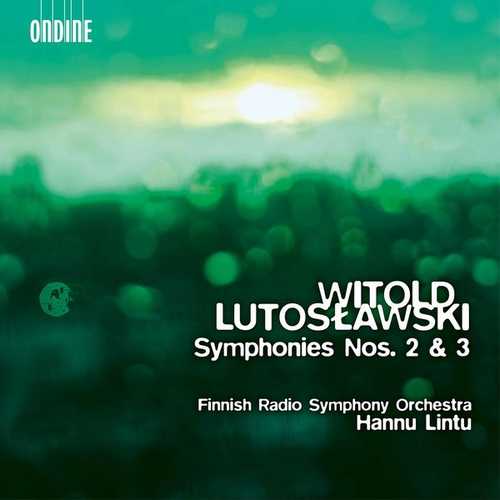
Composer: Witold Lutosławski
Orchestra: Finnish Radio Symphony Orchestra
Conductor: Hannu Lintu
Format: FLA C(tracks)
Label: Ondine
Release: 2020
Size: 1.07 GB
Recovery: +3%
Scan: yes
Symphony No. 3
01. Vivo – Lento – Vivo – Lento – Vivo – Stesso movimento – Lento
02. Vivo – Stesso movimento – Lento
03. Vivo – Stesso movimento – Adagio – Piu mosso – Lento
04. Vivo – Poco meno mosso – Meno mosso
05. Tempo I
06. Meno mosso – Tempo I – Meno mosso – Tempo I – Meno mosso – Ancora meno mosso – Piu largo – Tempo I – Lento – Vivo – Lento – Vivo
07. A tempo – Poco meno mosso – Presto – Stesso movimento – Poco lento – Allegro
Symphony No. 2
08. I. Hésitant
09. II. Direct
In 1966, Pierre Boulez conducted the world premiere of Witold Lutoslawski’s Second Symphony. Boulez was then the head of the NDR orchestra in Hamburg and the city welcomed a series dedicated to contemporary music. The following year, the piece was performed fully in Katowice, Poland, conducted by the composer. Lutoslawski was a brilliant man: he spoke many languages, including French, and was an excellent conductor.
First influenced by Bartók and French impressionist music, Witold Lutoslawski then forged a much more cutting-edge style based on the Second Viennese School. He invented the “aleatory counterpoint,” which remains his trademark. It can seem odd that Lutoslawski chose the frame of the symphony to express this new language. Nevertheless, it is with this form, that everyone thought dead, that he radically explored his aleatory techniques, specifically in the two movements of his Second Symphony. Melody and Rhythm are replaced by tones, harmony and texture and the music is continuously pulsed. Lutoslawski’s Second Symphony saluted Beethoven’s Fifth. His Third Symphony went further, developing the two-part structure of the previous and adding a long and abundant epilogue which left room for a few melodic elements during its elegiac final rising.



